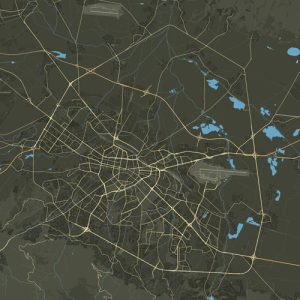“Knyazhevo” is a district in the southwestern part of Sofia, Bulgaria, bordered by “Tsar Boris III,” “Nikola Petkov,” and “Gorna Banya” boulevards. The area’s history dates back to Turkish times when it was known as Bali Efendi, consisting of three hamlets—Klisurska, Bali Efendi, and Circassian. In 1881, after the Liberation, it was renamed Knyazhevo in honor of Alexander Battenberg.
Knyazhevo thrived with various developments, such as the first distillery built by Hippocrite Bergier in 1881 and the first breweries by Lazar Trifkovich and the Proshek brothers in 1882. The first state craft school opened in 1883, and in 1886, Knyazhevo established the first post office. Josif Horvet erected Bulgaria’s first paper factory in 1891, and in 1893, a state mine for mercury mining was inaugurated.
The neighborhood played a role in mountaineering history, serving as the starting point for the first ascent of Cherni Vrah in 1895. On January 14, 1901, the first tram connection between Sofia and Knyazhevo was inaugurated. The Knyazhevo Military School, later named the “Hristo Botev” Reserve Officers School, was established in 1908.
In 1917, Knyazhevo became the first electrified settlement in Bulgaria. Before World War I, Knyazhevo was known for its healing mineral baths, attracting visitors for relaxation. Post-war, Sofia’s growth led to Knyazhevo evolving into an industrial center with diverse enterprises.
In 1938, Kniazhevo, along with other villages, became part of the Sofia Municipality, with a population of 5,000 people. The Princely Separate Municipality’s budget in 1938 reached 4 million BGN, with a significant portion coming from factory enterprises. In the 1930s, the first ski slope in Bulgaria was constructed in the “Cherniyat Kos” area of Kniazhevo, but it is no longer operational.
In 1962, the first cable car in Bulgaria was built from Kniazhevo to Kopitoto, providing a quick route to Vitosha. However, it was decommissioned in the 1990s after incidents and subsequent abandonment.
Landmarks in Kniazhevo include the oldest tree in Sofia, known as Goruna, with a trunk circumference over 3 meters and an age exceeding 500 years. The neighborhood is home to the state park Knyazhevska Gora, compared to the gardens of the Palace of Versailles and Potsdam. The Feast of Knyazevo and the temple feast of the church “St. Ilia” are celebrated on Ilinden at Sred Selo Square.
Knyazhevo boasts seven mineral springs, two of which are used for bottling. The water is weakly mineralized, bicarbonate-sodium, siliceous, with radon content, similar to Bankya’s mineral water, recommended for treating hypertensive disease.
The architecture of Kniazhevo consists mainly of single-family houses, villas, and small cooperatives. The neighborhood’s proximity to the mountain and quick access to the city center through Tsar Boris III Blvd. make it a preferred residential area. The oldest bridge in Sofia, the Alexander Bridge built in 1878 with funds from Russian Emperor Alexander II, is located near the Cherniya Kos area.
Education institutions in Kniazhevo include the Miladino Brothers Community Center (1923), Professional High School of Ecology and Biotechnology “Prof. Dr. Asen Zlatarov,” 26th SU “Yordan Yovkov,” CSU “Petko R. Slaveikov,” St. Sophia Secondary School with English language studies, CDG “Siyanie,” and the Center for special educational support “Prof. D. Katsarov,” among others.

